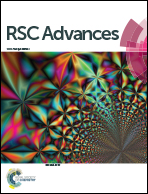Formation of thermally conductive networks in isotactic polypropylene/hexagonal boron nitride composites via “Bridge Effect” of multi-wall carbon nanotubes and graphene nanoplatelets
Abstract
Fabrication of thermally conductive networks in polymer matrices is thought to be an efficient way to improve the thermal conductivity of polymer composites. Here we show a new approach to form thermally conductive networks in isotactic polypropylene (iPP)/hexagonal boron nitride (h-BN) composites via “bridge effect” of multi-wall carbon nanotubes (MWCNTs) or graphene nanoplatelets (GNPs). The isolated h-BN particles can be connected by MWCNTs or GNPs to form three-dimensional thermally conductive networks. It is found that the thermal conductivity of the iPP/h-BN composites is obviously enhanced but maintaining the electrical insulation by adding small amount of MWCNTs or GNPs. Because of the large content area of GNPs, the “bridge effect” of GNPs is more obvious than that of MWCNTs. The thermal conductivity of the iPP/h-BN composites with 10 wt% and 30 wt% h-BN particles show 14% and 23% enhancement by incorporation of 5.0 phr MWCNTs, respectively. Meanwhile, the thermal conductivity of the iPP/h-BN composites with 10 wt% and 30 wt% h-BN particles are enhanced by 59% and 70% when adding 5.0 phr GNPs, respectively. The electrical conductivities of the iPP/h-BN composites with MWCNTs and GNPs were maintained below 2.5 × 10−13 and 2.6 × 10−15 S cm−1, respectively.


 Please wait while we load your content...
Please wait while we load your content...